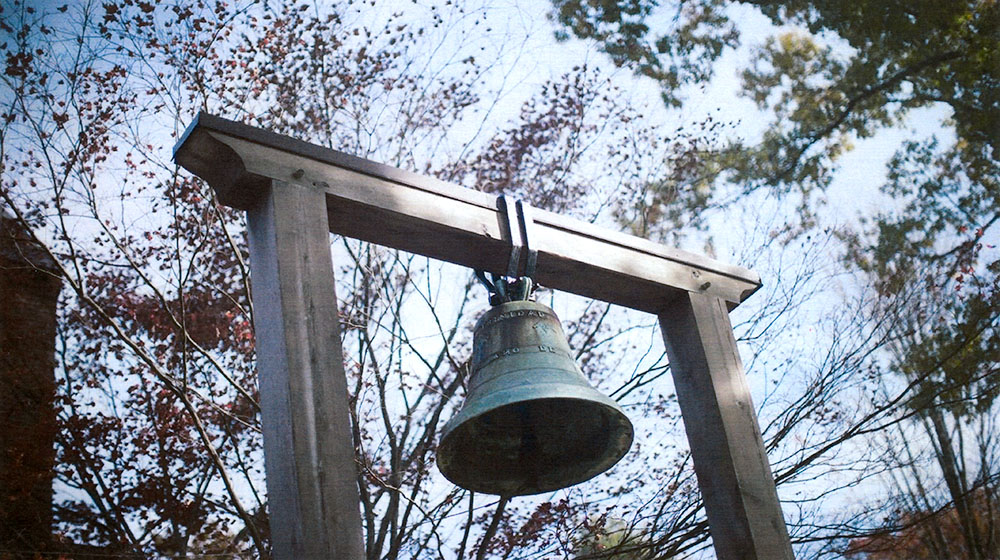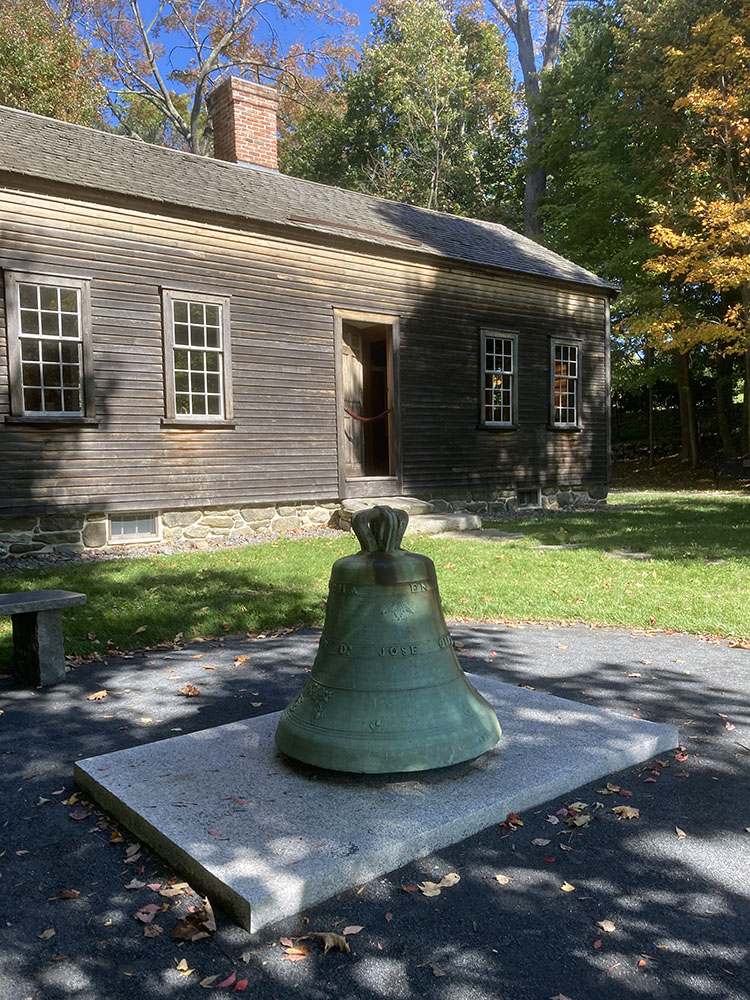
My father recorded the arrival of the Belmont Hill bell (Memories, p. 17):
It was also in either the second or third year of the school that the big bell near Bolles arrived. Mrs. Atkins arranged to have it shipped from one of the sugar plantations in Cuba. Actually, the bell was the second one sent to the school as the first one never arrived. In rough seas, it shifted in its cargo bay and fell through the bottom of the boat. Some people say it is very bad luck to move a bell and in this instance that certainly seems to have been the case. However the second bell made the trip with no trouble, but I would not stand under it, if I were you.
The Very Reverend Francis B. Sayre, Jr. ‘32 remembered (Duncan, p. 54): “How gladly [Dr. Howe] accepted the installation of the bell which ever since has summoned boys to classes.”
According to The Sextant (Christmas 1925), what must have been the second bell, gifted by Mr. W. G. Pullum, an executive in the Cuban operations of E. Atkins & Company, was en route and “…will be mounted on a scaffolding as is the custom in Cuba.” A year later The Sextant (December 1926) reported the safe arrival of this bell, adding: “It was first rung by his son, H. G. Pullum ‘30, at the closing exercises in June [1926],” one year before the School graduated its first class.
Later the Class of 1933, my father’s class, gave new supports for the bell, which were commemorated by a plaque on the northerly upright. TheSextant (June 1933). While there appears little doubt that the second bell once served as a “slave” bell on a Cuban plantation, to this day the exact source of that bell remains unknown.
In 2014 a group of 12 faculty members on a cultural trip to Cuba had an opportunity to visit Soledad plantation. The following year a group of ten students and two faculty made a spring trip to Cuba but were unable to visit Soledad. In 2017, in a course entitled “Advanced History Research”, the students studied historical records relating to Soledad and Cuban slavery, including the Atkins family papers at the Massachusetts Historical Society. This research was continued and refined the following year by students in that same course.
This second group prepared a written report, which they presented to the Board of Trustees on May 14, 2018. That report contained five alternative recommendations regarding disposition of the bell: (1) status quo, no change; (2) addition of a plaque with more context about the bell and its history; (3) an annual commemoration “to remember, memorialize, and embrace the complex history of the bell”; (4) create an online document library about the bell for use in Belmont Hill courses; and (5) produce an expanded history of the School to include more information about “the Belmont Hill founding families and plantation wealth” than contained in earlier histories of the School.
 Notably, the student report did not call for removal of the bell. Whatever criticisms one might make of some the report’s historical assertions or omissions, its recommendations expressly invited varying degrees of further study and deeper appreciation of the bell’s history, effectively turning the bell itself into a resource for the study of history at Belmont Hill.
Notably, the student report did not call for removal of the bell. Whatever criticisms one might make of some the report’s historical assertions or omissions, its recommendations expressly invited varying degrees of further study and deeper appreciation of the bell’s history, effectively turning the bell itself into a resource for the study of history at Belmont Hill.
Following presentation of the student report, the Board took no action on the recommendations, voting instead to table a decision on the bell’s fate. So the matter stood until August 2020. Then, in the wake of protests over the death of George Floyd, three students led by the captain of the football team, Ikenna Ugbaja ‘21, published a “Call to Action” demanding removal of the bell. On recommendation of the Head of School, the Board revisited the tabled matter, deliberated further over the five alternatives presented by the 2018 student study group, but finally voted unanimously to remove the bell for reasons set forth in a letter dated August 11, 2020, which will be discussed in the next article.
A fixture on the School’s campus for 94 of its first 97 years, known to every graduate (save perhaps a couple in the past two graduating classes), the bell was evicted a scant three years before the Centennial. Renamed the “Plantation Bell” and orphaned to Robbins House in Concord, the bell—once warmly welcomed by my grandfather and standing on supports given by my father’s class—seems to have fallen victim to the cancel culture and woke madness that has been progressively destroying American education for more than a decade.
As my father noted, many believe it is bad luck to move a bell, begging the thought: Will its removal bring a reversal of fortune to the School? Only time will tell. But if, as suggested by the 2018 student report, there are lessons to be learned from the bell and its history, they are far less likely to be learned by Belmont Hill students with the bell at Robbins House instead of on the campus.
